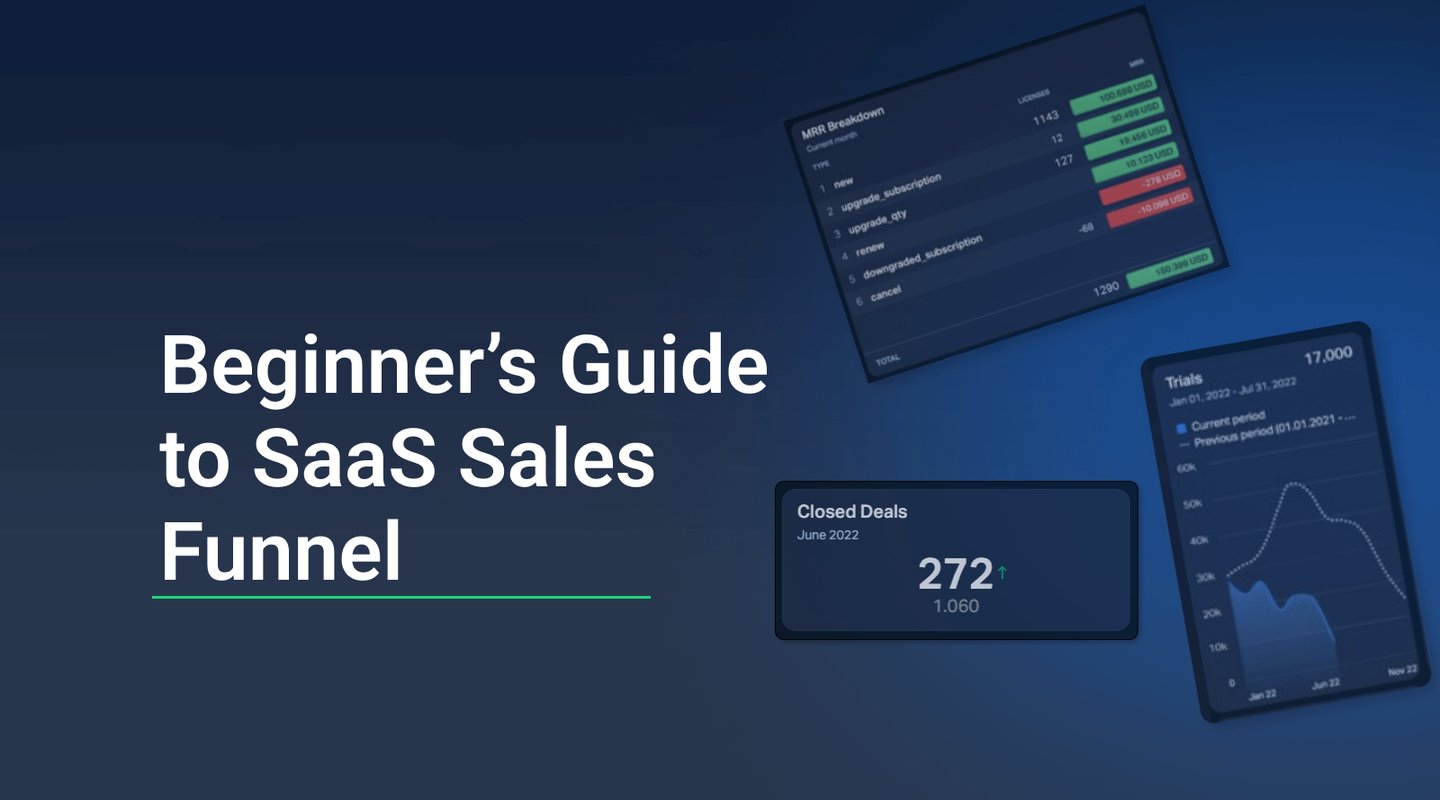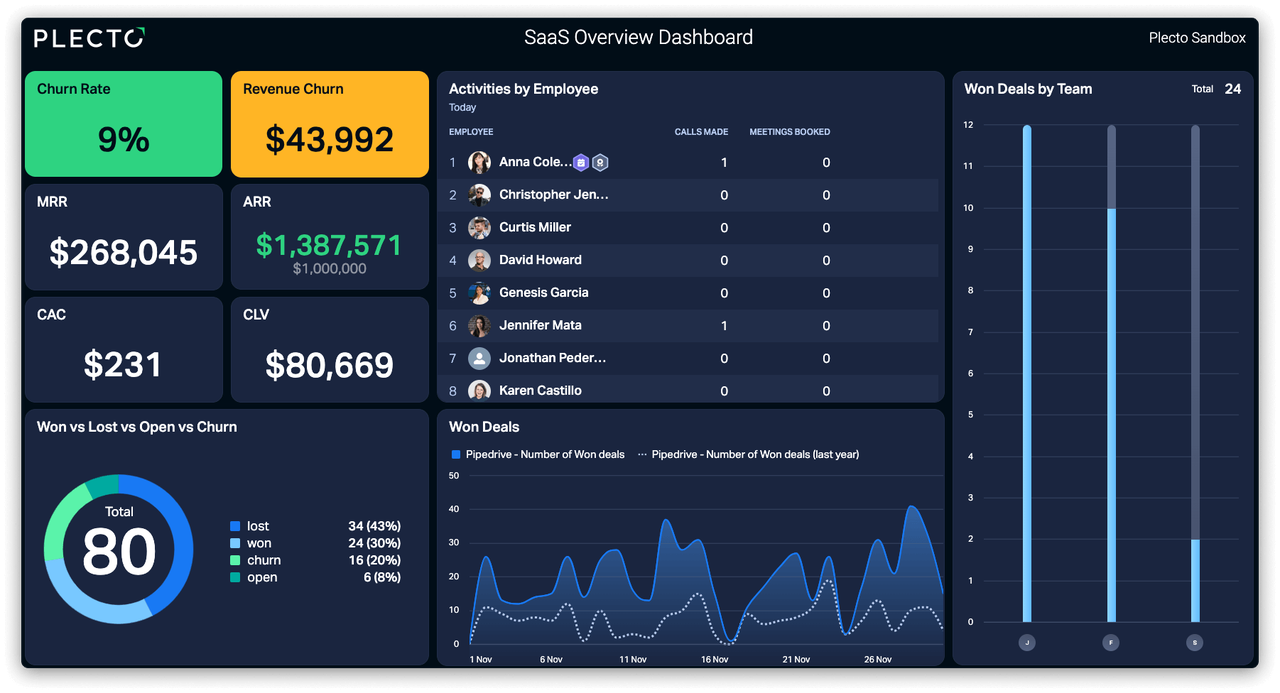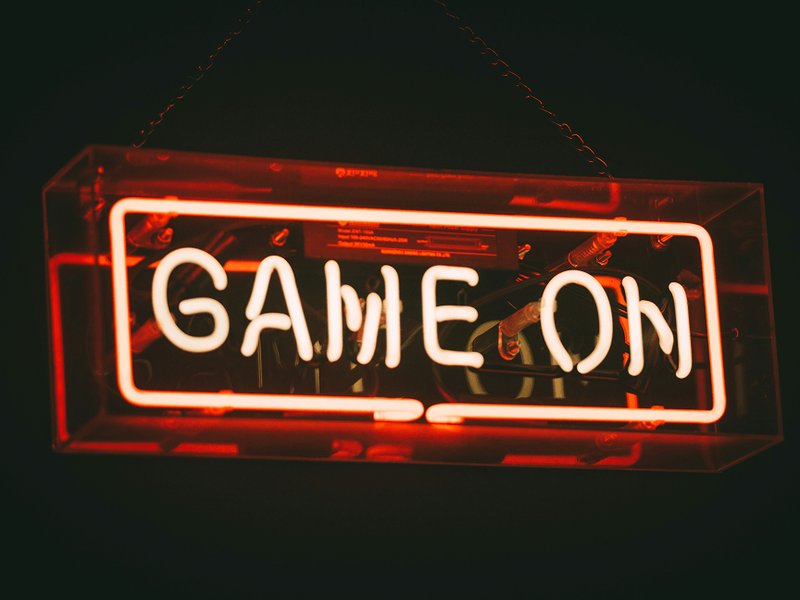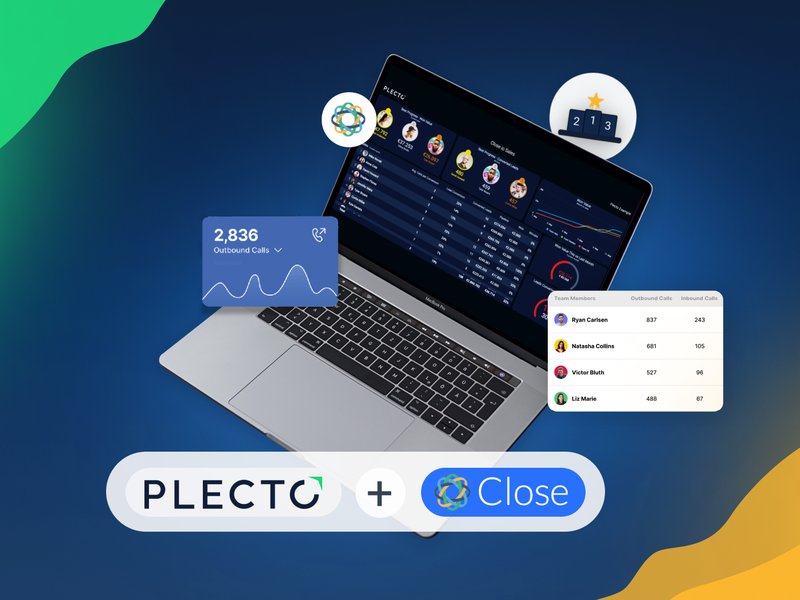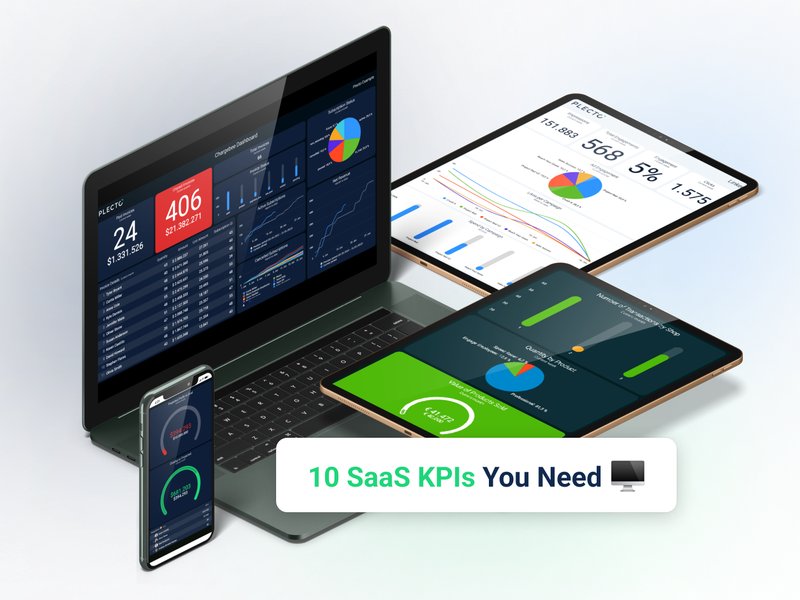Two years after the thick of the pandemic catapulted the SaaS industry to new levels of growth, the industry is more competitive than ever. With such stiff competition, it’s surprising that many SaaS companies still underutilize their SaaS sales funnels – which can amount to significant lost revenue.
In this article, we’ll explore the different stages of the SaaS sales funnel (also known as the “SaaS conversion funnel”) and suggest five ways that you can optimize your software sales funnel to generate more revenue. If you’re new to SaaS sales, you might first want to read this article to learn ten tips for how to sell SaaS like a pro, or this article explaining the six stages of a typical SaaS customer journey.
What are the stages of the SaaS sales funnel?
As you become more deliberate in using your SaaS sales funnel to your advantage, it’s important to understand that the SaaS sales funnel is different from the typical sales funnel in other industries.
One of the key differences of the SaaS sales funnel vs. other industries is that the customer’s first purchase occurs in the middle of the funnel. This is because SaaS companies rely on recurring revenue for the majority of their income. In SaaS sales, the bottom of the funnel, where the sale usually takes place, is replaced by “retention” with a focus on building each customer’s lifetime value.
With the industry’s unique software sales funnel in mind, we can say that prospects entering your SaaS sales funnel will generally move through some or all of these six stages:
Build your first dashboard.
Start your 14-day free trial today
1. Unaware (Top of Funnel)
Prospects at this stage of the software sales funnel have identified a need or pain point and are beginning to look into solutions. At this point, they haven’t heard of your solution.
2. Aware (Top of Funnel)
At this point, the prospect’s research has led them to your solution. The company’s website or social media presence is usually the first touchpoint in the SaaS customer journey. This is a crucial point in the software sales funnel because this is where prospects get their first impression of your solution. Nine out of ten B2B buyers say that online content has a moderate to major impact on their purchasing decisions, so it’s critical that your marketing messaging is on point. In addition, it’s important to entice the prospect to share their contact information so that the sales team can follow up and (hopefully) move them through the funnel.
3. Lead (Middle of Funnel)
Now you’ve piqued the prospect’s curiosity and they’ve requested more information about your solution. They aren’t ready to buy, but they’ve provided some contact information and have officially entered the sales funnel. It’s usually at this point that a sales rep will make initial contact to ascertain the prospect’s needs and attempt to convert them to a qualified lead. This is a pivotal point in the sales process because this is where the lead will progress to the next step in the sales funnel – or go cold and not progress further in the journey.
4. Qualified Lead (Middle of Funnel)
Prospects in this category generally fall into two subcategories: marketing-qualified leads (MQLs) or sales-qualified leads (SQLs). MQLs have engaged with the company beyond their original request for information – for example, they may be asking product-specific questions. Prospects at this stage of the journey usually have a short list of possible solutions and are trying to identify their best option. In this stage of the journey, it’s crucial to position your product as the best fit for the prospect’s needs – this is where a personalized pitch along with relevant case studies and videos becomes invaluable. If the sales team senses an intent to buy, the prospect becomes an SQL and the next step is usually a product demo. The demo is often the last step before the prospect makes a decision.
5. Ready-to-Convert or Converted (Middle of Funnel)
This is the finish line! At this point in the software sales funnel, marketing and sales have done their jobs and the prospect is ready to buy or has bought an initial subscription to your product. If your software isn’t a self-service solution, this is where you’d negotiate things like price and contract terms.
6. Customer (Bottom of Funnel)
Now the sales team has successfully moved the prospect through the SaaS sales funnel and converted them to a paying customer. Here, the focus shifts from customer acquisition to customer retention. Your company’s success in the SaaS industry hinges on recurring revenue from subscriptions, cross-sells, and upsells – so the work is just beginning. For most SaaS companies, upsells and renewals account for 75–90% of revenue vs. just 5–30% from the original sales. Check out this article to learn 5 effective SaaS customer retention strategies to help you hold on to the customers you have while increasing their lifetime value.
5 Ways to Optimize Your B2B Software Sales Funnel
Now that you know the six stages of the software sales funnel, let’s take a look at how you can optimize and use it to your fullest advantage. These five tactics will help you optimize your SaaS conversion funnel and pull ahead of your competition.
1. Make your company’s SaaS marketing funnel work for you
A successful SaaS marketing funnel is one of your inbound sales team’s greatest assets! Building your company’s software sales funnel before it has a SaaS marketing funnel in place is putting the cart before the horse. Before a prospect enters the sales funnel, they first encounter your company’s marketing content – usually its website or social media presence. Make it easy for prospects to find your website by optimizing it to appear in the search results for your company’s products and services, and solutions to the problems it addresses for your customers.
Your website content should demonstrate how your company has solved problems, eased pain points, and contributed to its customers’ success. As a general guideline, these are the types of content prospects should encounter at each stage of the SaaS marketing funnel, which should work in tandem with your SaaS sales funnel:
- Top of funnel – The first content a prospect encounters should position your company as an expert and the best solution provider to solve the issue at hand. Content at this stage should focus on the problem or pain point the prospect is looking to address, and how your solution can help. How-to guides, blog posts, and explainer videos have proven to be effective top-of-funnel communication vehicles.
- Middle of funnel – Case studies are particularly effective at this stage of the journey, along with solution-based demo videos (or better yet, interactive demos) showcasing specific product features based on the prospect’s specific needs. Price charts, testimonials, and customer reviews can also help in converting prospects who are ready to buy.
- Bottom of funnel – The communication focus during the retention phase of the SaaS sales funnel should be cross-sells, upsells, and continuing to demonstrate value for money to drive renewals. Communication here should highlight things like advanced product features and complementary products that can help increase customer lifetime value. Long-time customers who use multiple products are less likely to churn vs. new, single-product users or basic subscribers.
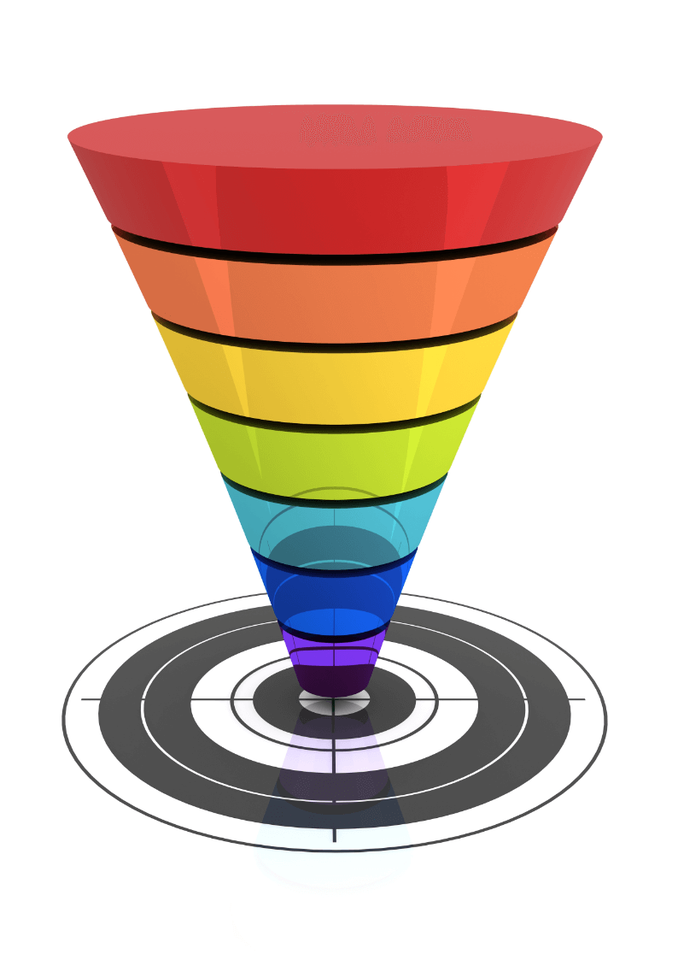
2. Create content and messaging around prospects’ needs
It’s called a “customer journey” for a reason. Use segmented multi-channel messaging to reach the right prospects – and establish your company as a subject-matter expert.
Instead of solely pushing the type of content that sales and marketing would like customers to see, take a customer-centric approach and make sure that the majority of customer-facing content speaks to their needs at each stage of their decision-making process. The most effective SaaS sales messaging is based on problem-solving. Create demos and pitches that speak directly to your prospects’ pain points, demonstrating that your company understands their challenges, can help solve their problems, and will be the right solution for them now and in the future. Prove that your solution is the prospect’s best option by showing them what you’ve accomplished for other customers with similar requirements.
3. Use targeted digital advertising to fill your funnel
Targeted digital advertising can provide outstanding ROI, and LinkedIn has proven to be an excellent way to reach B2B clients. Advanced analytics allow you to reach highly targeted prospects, which improves your chances of generating a qualified lead. Campaigns targeting people who’ve already visited your company’s website are particularly effective, especially when combined with a strong content marketing strategy – 80% of B2B decision-makers prefer to get information from a series of articles vs. ads. A well-targeted ad and excellent content marketing material could be the magic bullet that gets your company onto a prospect’s short list of possible solutions!
4. Focus on leads
This might seem obvious, but hear us out. The majority of your incoming sales leads are unqualified. Taking the time to qualify leads might seem like an arduous process, but it can save a lot of time and money in the long run because unqualified leads often don’t have purchasing authority and very often will never convert. Many sales organizations make the mistake of casting a wide net instead of targeting the most valuable leads. This is inefficient. Instead, identify the most valuable leads and nurture them by engaging, answering their questions, and moving them through the funnel. Your efforts will pay off – statistically, nurtured leads make 47% larger purchases than non-nurtured leads.
5. Measure success and failure rates throughout the SaaS sales funnel
68% of companies say that they don’t measure the effect of their sales funnels, so it’s hardly shocking that an estimated 79% of MQLs never convert. Figuring out where in your SaaS sales funnel prospects stall could be the key to closing more deals. A high proportion of leads not converting to MQLs or SQLs could indicate that your marketing messaging is off relative to prospects’ needs or to what your product can actually do. Having a high number of qualified leads that don’t convert could be a clue that your pitch or demo could use some work – or maybe your case studies aren’t compelling enough. If you’re losing a lot of deals at the “ready to convert” stage, your negotiation skills, pricing structure, or contract terms might need some attention.
As a SaaS company, you have an extra step in your sales funnel. Don’t forget to track your recurring revenue, revenue from cross-selling and upselling, retention rate, and retention-related metrics like NPS, customer satisfaction score, and churn rate. This article suggests ten ways to reduce customer churn, which can help you hold on to your existing clients.
Use Dashboards to Stay On Track
Did you know that CX dashboards can support SaaS retention strategies and help reduce churn? Plecto’s real-time dashboards give you on-demand access to an up-to-the-minute visualized overview of your company’s most relevant data and KPIs. If you’re new to KPI tracking, make sure to include these 10 important SaaS KPIs.
Plecto also includes popular built-in features like leaderboards, gamification, and instant notifications to help motivate sales reps, customer service teams, and other customer-facing support staff.
Sign up for a free 14-day trial and see how Plecto can help your company acquire and retain customers like never before!
